SWEET CORN: OLD VARIETY, MODERN GROWING
Genetics: Up, Up, Up with the Sugar
I plan on eating sweet corn almost daily from about the middle of July until early autumn. I know the arguments against growing sweet corn in a backyard garden: It’s cheap at the farmstand and space-hungry in the garden. What’s more, the most modern, “supersweet” varieties hold their sweetness for days.
The supersweet varieties are truly supersweet. But “supersweet” is too much of a catchall term. Old-fashioned corn, the Papoon corn developed around 1750 by the Haudenosaunee Confederacy and still available today, is noted for its creamy texture and 9 percent sugar due to its SU gene. Unfortunately, those sugars start changing into starch as soon as an ear is harvested.
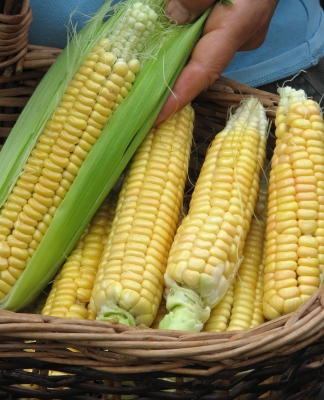
Golden Bantam sweet corn
In the latter half of the 20th century, “Sugary enhanced” sweet corn came on the scene. The SE gene incorporated into sweet corn varieties jacked sugar levels up to 17 percent. More Sugar meant more time for sweetness to hold following harvest. SE kernels are very tender.
Soon after, another gene, SH2 or “shrunken-2,” was found, which pushed that sweetness even higher, up to 35 percent! Although these varieties demand warmer soils in which to germinate, or they rot, their sugars stay put, not changing to starch, after harvest. And with thicker kernels, SH2 varieties were ideal for storage and shipping.
Two more types of corn round out the quiver of variety types of sweet corn from which to choose. “Synergistic SU” (“SYN”) corn varieties combine the SU and SH2 genes to yield corn that is sweet, creamy, and tender. “Augmented SH2” (AUG-SH2) varieties use a modified SH2 gene that retains the sweetness while shedding the toughness of kernels.
If you grow sweet corn, be careful of their corny neighbors. For best expression of what you’re planting, keep SH2 away from SU or SE corn; SYN distant from SH2 or AUG-SH2; and aug-SH2 from SU, SE, or SYN varieties.
Whew! That’s a lot of choices. Each type of sweet corn hosts a slew of varieties; the type of any variety should be indicated on the seed packet and/or in the catalogue.
As frightening as all this corn genetics may sound, most varieties of sweet corn are not GMO — at least for now.
The Best, In My Opinion
Call me provincial, but I keep things simple, which still lets me grow my favorite sweet corn. Can sweet corn be too sweet? Yes, in my opinion.
No matter about sweetness though, because I prefer the moderate sweetness and richer, cornier flavor and chewy texture of traditional (SU) sweet corn, specifically the variety Golden Bantam, the only variety I grow. (Incidentally Golden Bantam was the standard of excellent in sweet corn soon after it first appeared on the scene in 1902.)
So what if its sugars begin to change to starch right after picking? I can eat them within minutes of picking anyway, sometimes even chomp down on an ear right out in the garden.
And For Planting, I . . .
I may not be modern when it comes to choosing varieties, but I do strive for state of the art when it comes to growing techniques. For a healthy crop of corn and the best yields from the smallest area, corn plants need rich soil, adequate water, and full sunlight (6 or more hours daily).
I grow corn, as I grow other vegetables, in permanent, no-till beds three feet wide and 20 feet long. Each bed receives an annual dressing of one inch of compost. Generally, that’s all. Last year’s sweet corn plants seemed hungry — perhaps because of heavy rainfalls leaching nutrients out of the soil — so this spring I also sprinkled the beds with soybean meal, a high nitrogen fertilizer that is inexpensive, organic, and slowly releases nitrogen throughout the season. Two pounds per hundred square feet.
Water — the right amount at the right time — is needed to make the most of rich soil. Two drip irrigation lines running the length of each bed deliver water every day, four times a day for five minutes at a time. No need for me to run back and forth to the spigot, though, because an inexpensive, battery-operated water timer does that work for me.
With rich soil and adequate water, I can plant corn closer than is usually recommended. I plant in clusters (“hills”) two rows of them them running up each bed with eighteen inches between hills within each row. Five seeds go into the ground at each hill, but only the three sturdiest get to grow on once they’re a few inches tall. Hill planting also ensures sufficient mingling of plants for good pollination, a necessity for well-filled ears.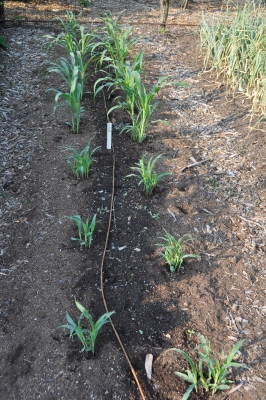
My first sweet corn planting went into the ground in the middle May. I make additional plantings every week or two until the end of June.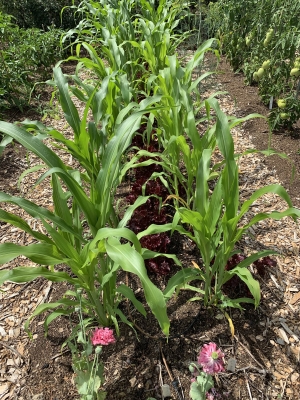
Well Worth Growing
A few pests attack sweet corn almost everywhere it’s grown. My main defenses against corn pests are crop rotation and a thorough cleanup following harvest.
Still, occasional pests do attack. I usually ignore corn borers, found mostly at the tip of the ears. So I just break off the tip off any ear having a resident caterpillar. I could instead thwart them in the first place by cutting off the silks or by putting a few drops of mineral oil on them after pollination occurs or by spraying the natural, biological insecticide Bacillus thurengiensis (sold as BT, Thuricide, Dipel, etc.)
Corn smut, another occasional pest, shows up as swollen, silvery grey globs growing out of the ears. I rarely see this pest but next time I do I plan to eat them. They are a fungus, a tasty dish (cuitlacoche) in Mexico. “Maize truffles,” anyone?  If they turn you off, just toss infected ears into your compost pile. Or plant a resistant variety.
If they turn you off, just toss infected ears into your compost pile. Or plant a resistant variety.
Each summer I reap 80 or more delectable, pesticide-free ears from each of my four beds of sweet corn. Not bad when you consider that the same space is also home for other vegetables both earlier (turnips, lettuce, arugula, for example) and later in the season (Chinese cabbage, spinach, and, again, lettuce, for example).
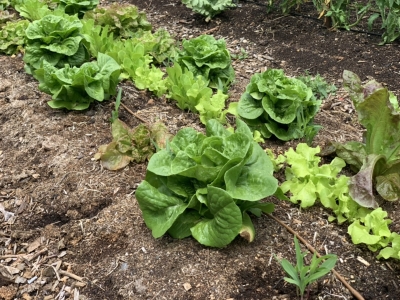
Corn and lettuce interplant
Interplanting is one facet of “multidimensional gardening” that I describe in my book Weedless Gardening.

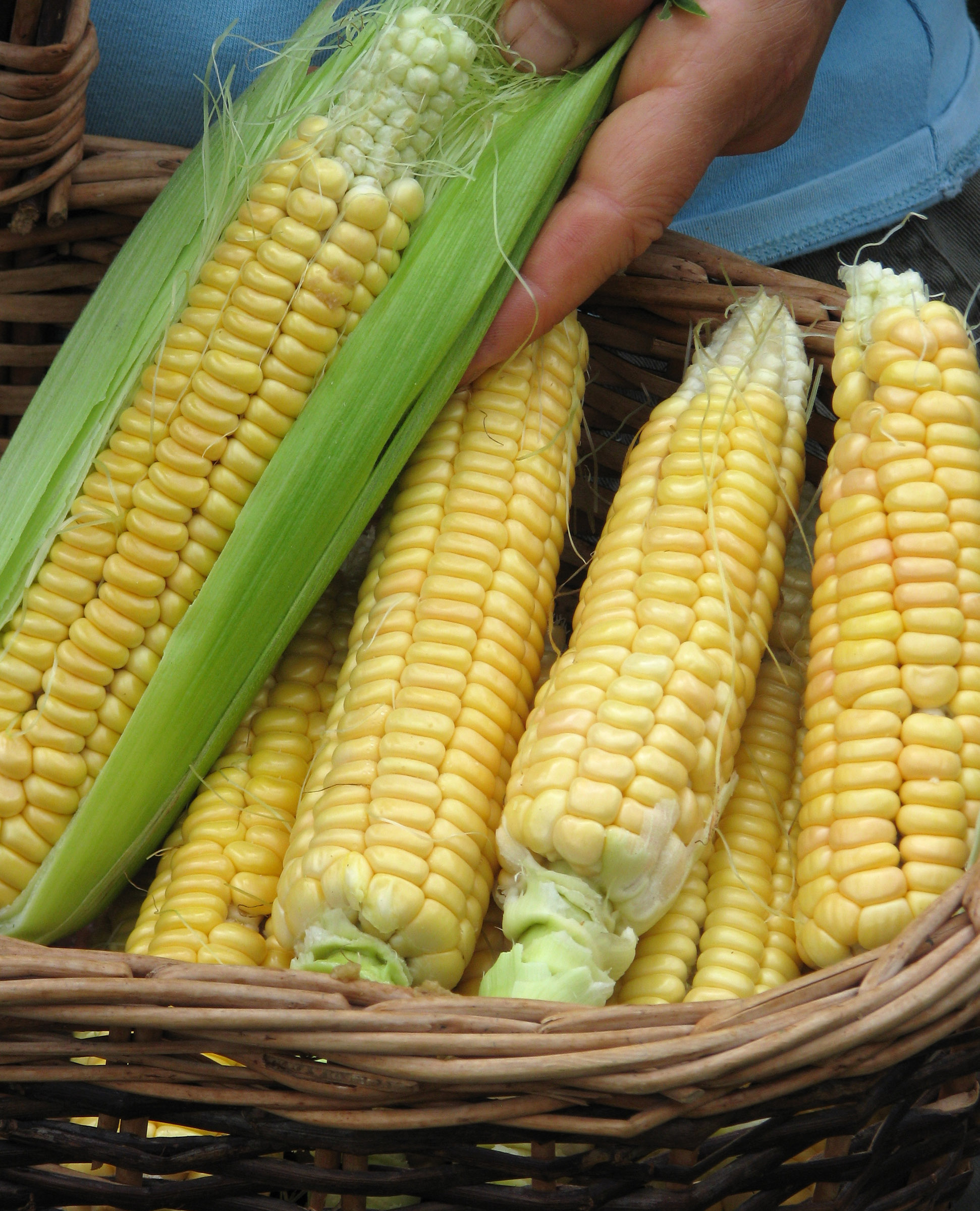

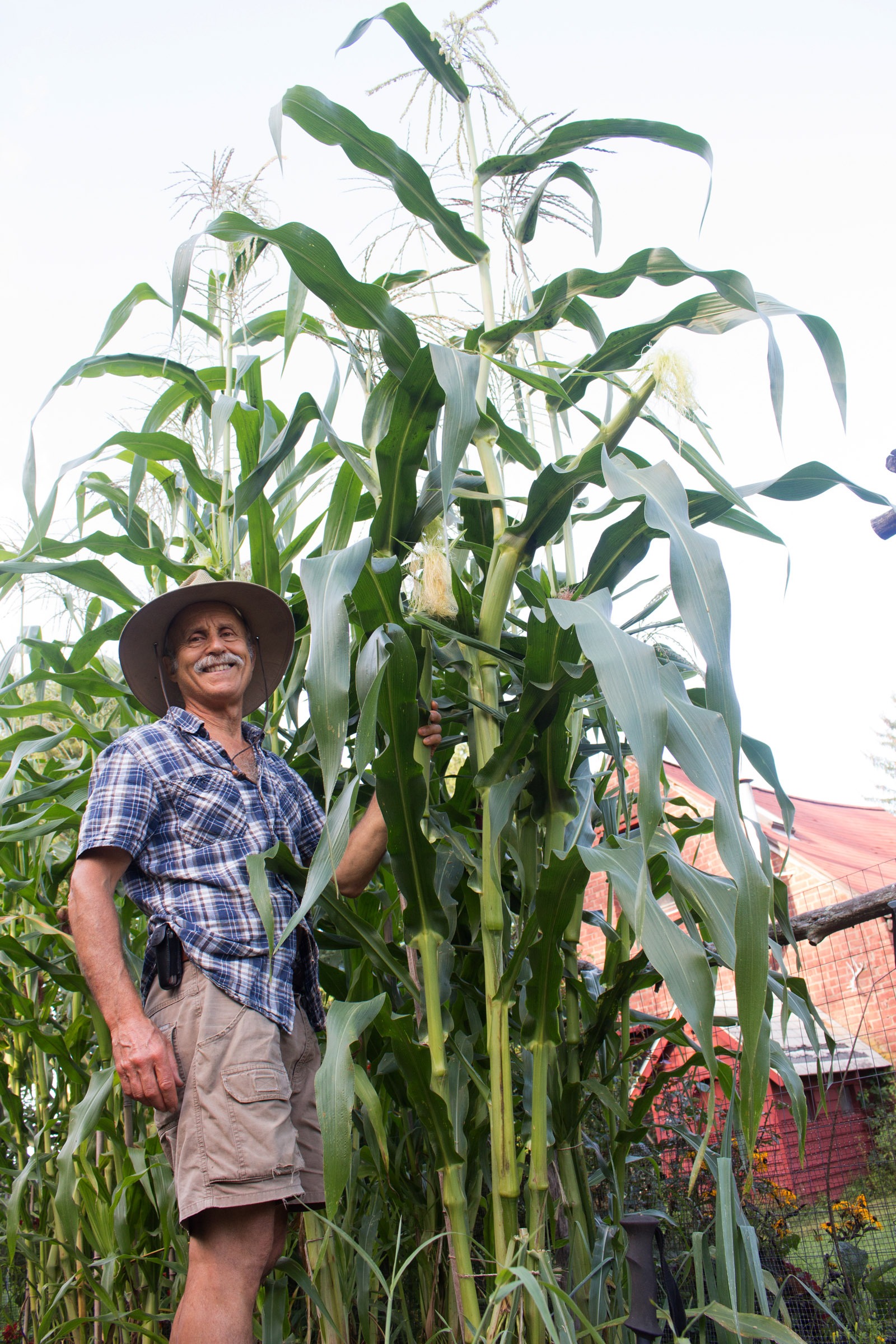


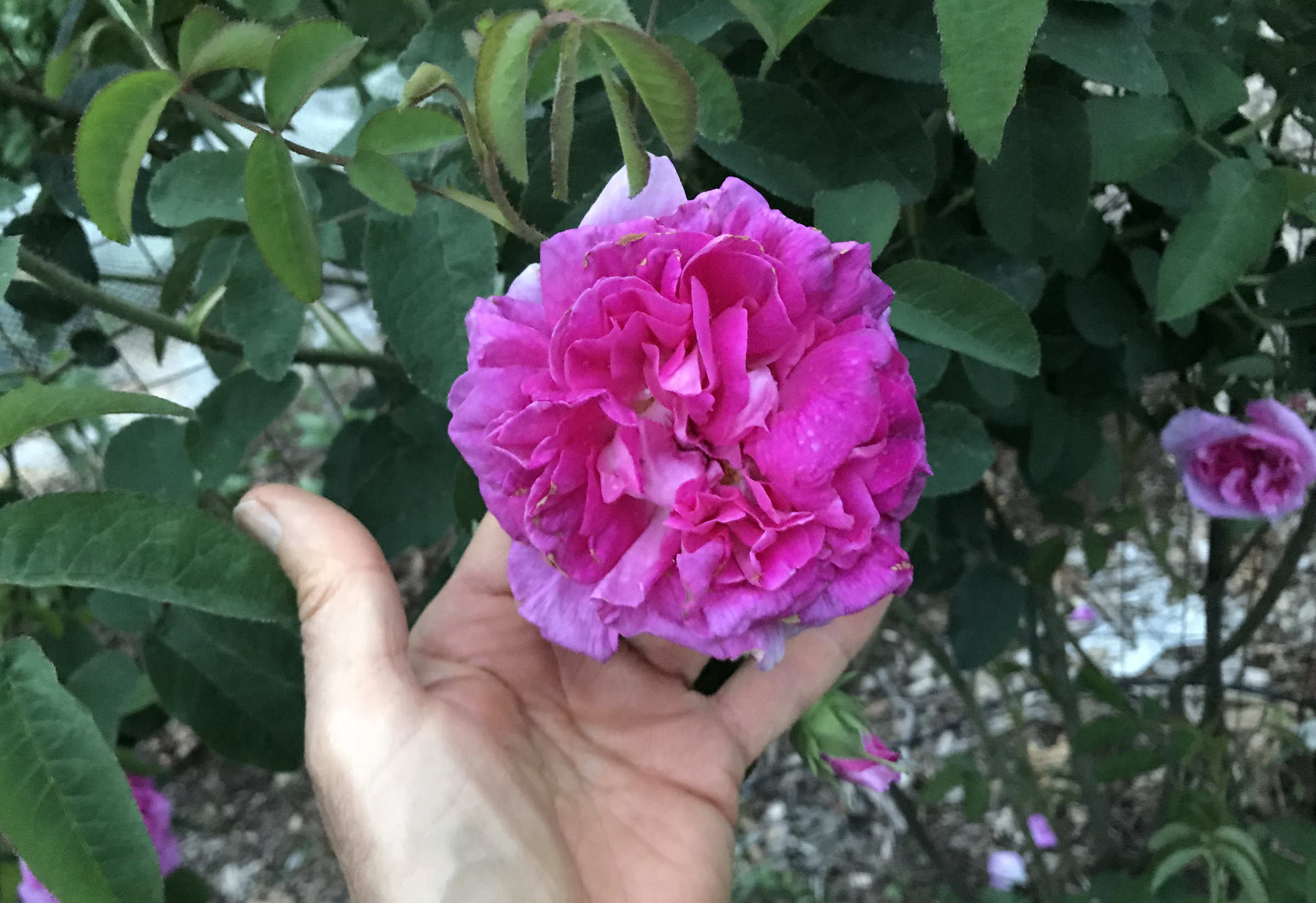
I have always had a love affair with white sweet corn and grow it exclusively. I planted silver queen for years but I’m now trying some of the newer whites from Johnny’s. I never knew the sugar % but now I’ll have to look that up! Thanks for another informative article.
Thank YOU. I have to admit, when I lived in southern Delaware, Silver Queen was queen. I never liked it that much. Each to his own. I’ll stick with Golden Bantam.
Eat the huitlacoche! It is delicious – at least to me and millions of others. I consider myself fortunate when I find some on an ear of corn.
Mostly, I find it very rarely. Then again, I like the the GB corn better. I have eaten the huitlacoche and it is very tasty.
Great article! There is an error in this paragraph: “Two more types of corn round out the quiver of variety types of sweet corn from which to choose. “Synergistic SU” (“SU”) corn varieties combine the SU and SH2 genes to yield corn that is sweet, creamy, and tender. ”
The “Synergistic SU” should have the acronym “SYN” rather than “SU.”
Thanks!
Thank you for the correction, which I made to the test. By the way, I looked at your website and noted your guru Swami Satchidanandaji. I saw him when I was a graduate student (and starting to do yoga) in Boulder in 1971.